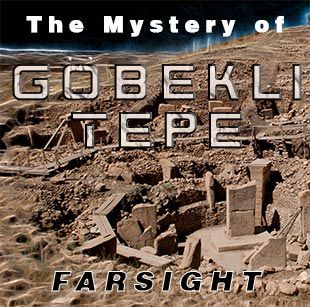The Mystery of Göbekli Tepe

Göbekli Tepe is one of the weirdest archaeological sites on the planet Earth. It is in southern Turkey, in the middle of nowhere, about 60 kilometers north of the Syrian border, surrounded by barren, dry land. There are three things that make this archaeological site really stand out. The first is that it was constructed using impossibly large vertical stone pillars, often shaped like the capital letter T, so-called megaliths. The pillars are arranged in circles, they stand up to 6 meters or 20 feet tall, weighing about 10 tons each. It is a huge site, and there are about 20 of those circles containing the stone pillars. They are each delicately placed into what one might think of as a socket. And the sockets were each cut out of the bedrock.
But the second thing that makes this archaeological site really stand out is that it was constructed between 10,000 and 8,000 BC. When mainstream science says that there were not supposed to be any major civilizations on this planet, those early builders cut, lifted, and placed into sockets impossibly big stones to make impossibly amazing structures.
Finally, at some point, the entire place was buried, or deliberately backfilled under many meters of rock and debris. To quote Wikipedia, “The reason the complex was carefully backfilled remains unexplained.” That’s right. No one can figure out why those ancients built it or buried it, or how those ancients built it and buried it. And if that is not enough, there does not seem to be much evidence of habitation.
At Farsight, we conducted a project using remote viewing to understand what actually happened. Our remote-viewing data make a lot of sense. We now know how Göbekli Tepe was constructed, and why it was buried. Very little that you hear mainstream scientists say about the how and the why of Göbekli Tepe is correct.
With clear and coherent sessions presented by Aziz Brown, PrinCess Jeanee, Kahmia Dunson, Melena Hall, and Trudy Benjamin, and from the perspective of the remote-viewing data, this is the true story of Göbekli Tepe.
See it. Be free.
The Remote-Viewing Data
Blind Conditions for All Remote-Viewing Data: All remote viewing for this project (as with all projects conducted at The Farsight Institute) was conducted under totally blind conditions. The viewers were told nothing about the project or specific targets while they were conducting their remote-viewing sessions. They were only instructed that there is a target, and that they should remote view it.
Targets for this Project
A: The construction and placement of the largest massive megaliths of Göbekli Tepe.
B: The event that explains why Göbekli Tepe was buried circa 8,000 B.C.